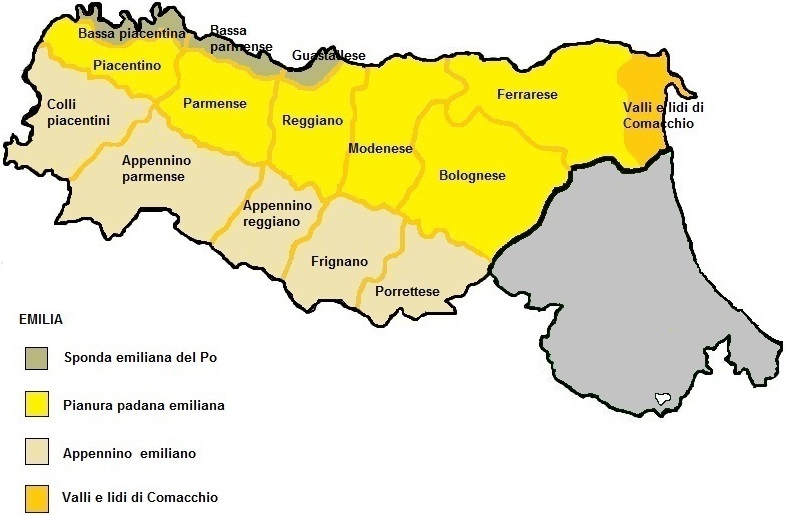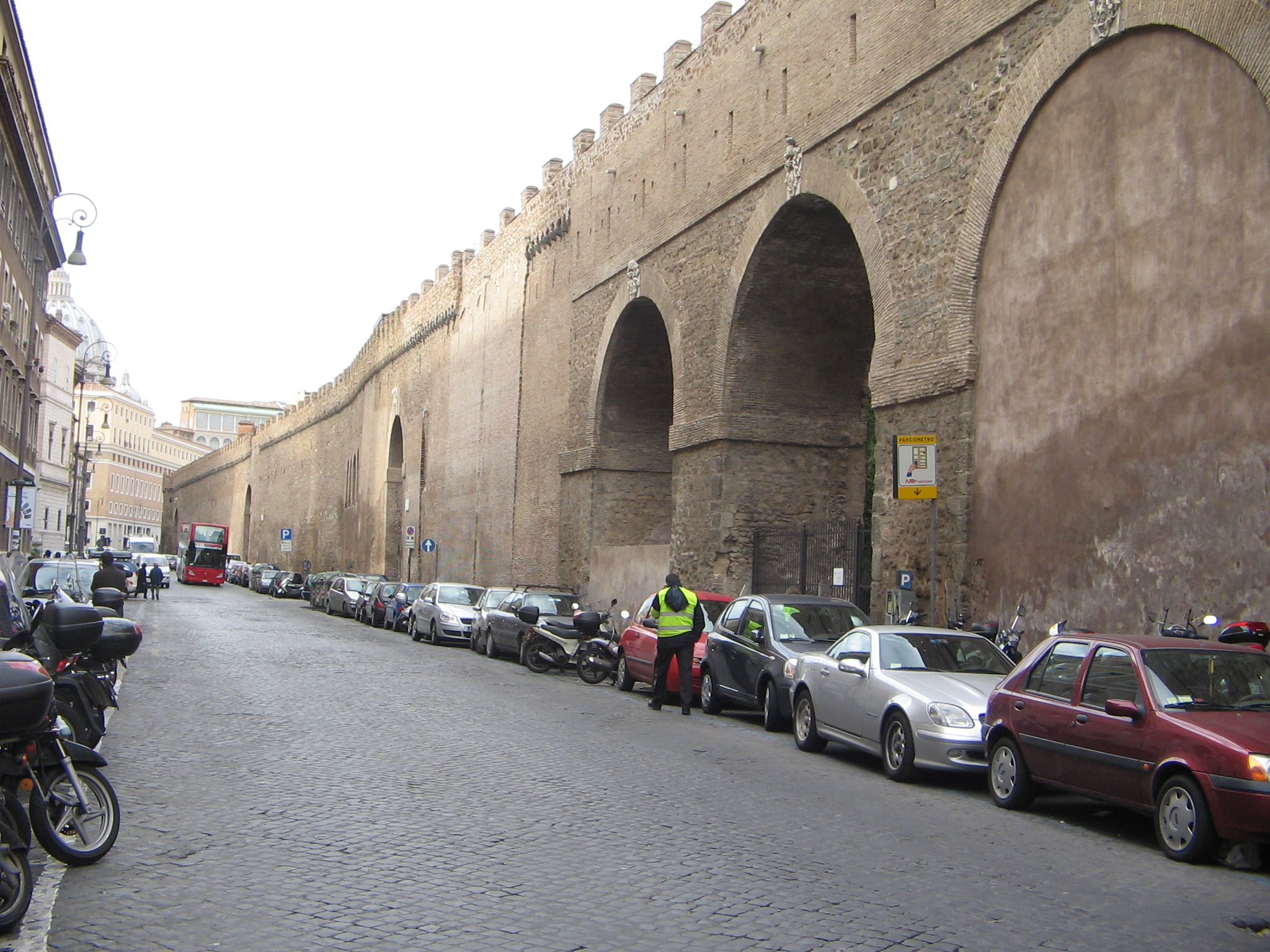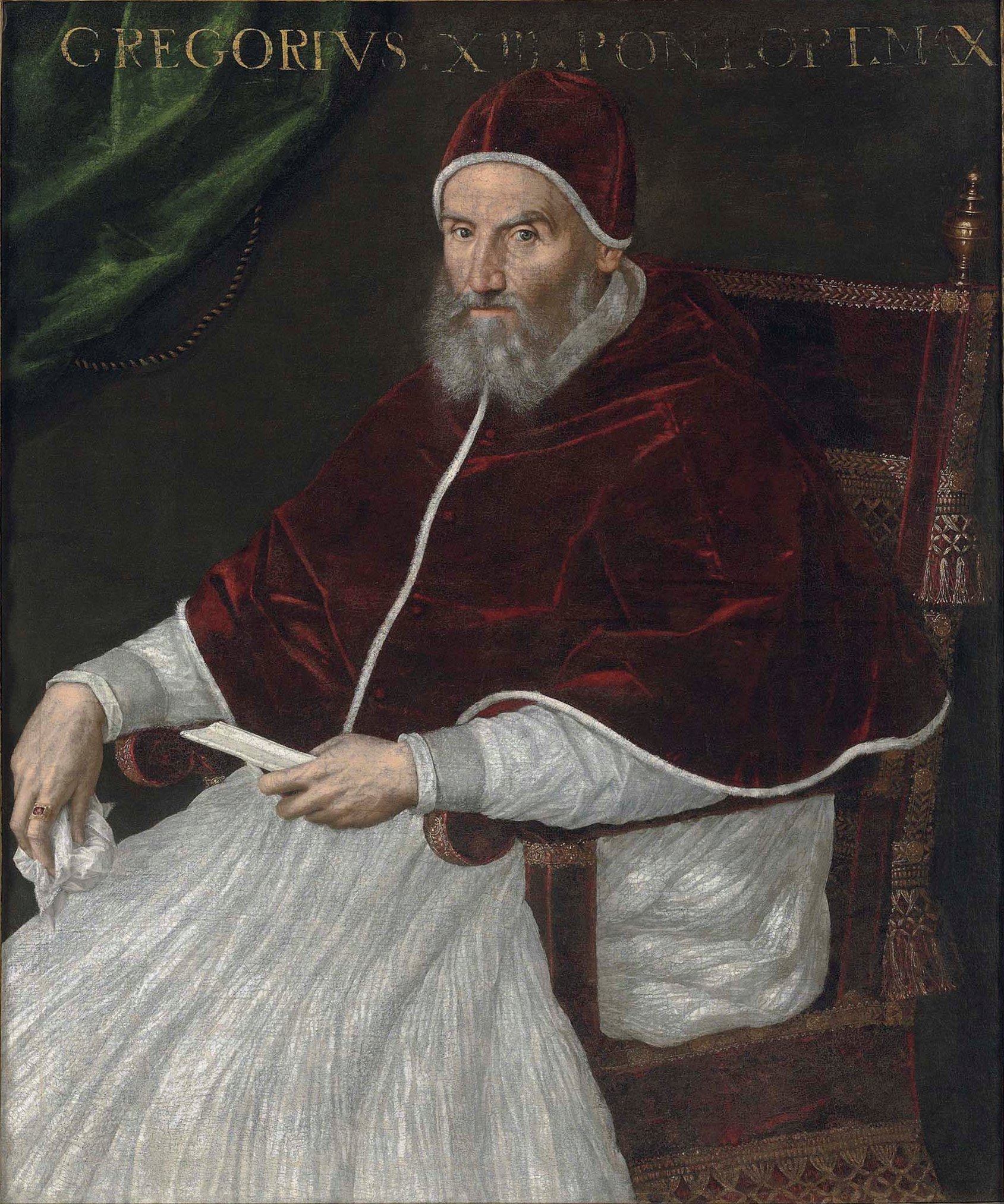|
Ottavio Mascherino
Ottaviano Nonni (1536 – 6 August 1606), called Il Mascherino, was an Italian architect, sculptor, and painter born in Bologna. Apprentice of Giacomo Barozzi da Vignola, he was active in Emilia and in Rome, where he had been living in the rione of Borgo, in the road still bearing his name (''Via del Mascherino''). He was the architect of the Quirinal Palace under Pope Gregory XIII. His other works include the churches of San Salvatore in Lauro (1591), Santa Maria in Transpontina, the Bandini Chapel in San Silvestro al Quirinale, and the oval plan-design for the church of Santo Spirito in Sassia Church of the Holy Spirit in the Saxon District (Italian language, Italian: ''La chiesa di Santo Spirito in Sassia'') is a 12th-century Titular church, titular church in Rome, Italy. It is in ''Borgo Santo Spirito'', a street which got its name fr .... He died in Rome in 1606. References * * 1536 births 1606 deaths 16th-century Italian architects Architects from Bologna Artis ... [...More Info...] [...Related Items...] OR: [Wikipedia] [Google] [Baidu] |
Bologna
Bologna ( , , ; ; ) is the capital and largest city of the Emilia-Romagna region in northern Italy. It is the List of cities in Italy, seventh most populous city in Italy, with about 400,000 inhabitants and 150 different nationalities. Its Metropolitan City of Bologna, metropolitan province is home to more than 1 million people. Bologna is most famous for being the home to the List of oldest universities in continuous operation, oldest university in continuous operation,Top Universities ''World University Rankings'' Retrieved 6 January 2010Hunt Janin: "The university in medieval life, 1179–1499", McFarland, 2008, , p. 55f.de Ridder-Symoens, Hilde [...More Info...] [...Related Items...] OR: [Wikipedia] [Google] [Baidu] |
Giacomo Barozzi Da Vignola
Giacomo Barozzi da Vignola ( , , ; 1 October 15077 July 1573), often simply called Vignola, was one of the great Italian architects of 16th century Mannerism. His two great masterpieces are the Villa Farnese at Caprarola and the Jesuits' Church of the Gesù in Rome. The three architects who spread the Italian Renaissance style throughout Western Europe are Vignola, Serlio and Palladio. He is often considered the most important architect in Rome in the Mannerist era. Biography Jacopo Barozzi was born at Vignola, near Modena (Emilia-Romagna). He began his career as an architect in Bologna, supporting himself by painting and making perspective templates for inlay craftsmen. He made his first trip to Rome in 1536 to make measured drawings of Roman temples, with a thought to publish an illustrated Vitruvius. Then François I called him to Fontainebleau, where he spent the years 1541–1543. Here he probably met his fellow Bolognese, the architect Sebastiano Serlio and the ... [...More Info...] [...Related Items...] OR: [Wikipedia] [Google] [Baidu] |
Emilia (region Of Italy)
Emilia () is a historical region of northern Italy, which approximately corresponds to the western and the north-eastern portions of the modern region of Emilia-Romagna, with the area of Romagna forming the remainder of the modern region. Etymology Emilia takes its name from the Via Aemilia, a Roman road constructed by the consul Marcus Aemilius Lepidus in 187 BCE to connect Rimini with Piacenza. The name was transferred to the district (which formed the eighth Augustan region of Italy) as early as the time of Martial, in popular usage. In the 2nd and 3rd centuries Aemilia was frequently named as a district under imperial judges (), generally in combination with Flaminia or Liguria and Tuscia. The district of Ravenna was, as a rule, from the 3rd to the 5th century, not treated as part of Aemilia, the chief town of the latter being Placentia (Piacenza). In the 4th century Aemilia and Liguria were joined to form a consular province; after that Aemilia stood alone, Ravenna b ... [...More Info...] [...Related Items...] OR: [Wikipedia] [Google] [Baidu] |
Rome
Rome (Italian language, Italian and , ) is the capital city and most populated (municipality) of Italy. It is also the administrative centre of the Lazio Regions of Italy, region and of the Metropolitan City of Rome. A special named with 2,746,984 residents in , Rome is the list of cities in the European Union by population within city limits, third most populous city in the European Union by population within city limits. The Metropolitan City of Rome Capital, with a population of 4,223,885 residents, is the most populous metropolitan cities of Italy, metropolitan city in Italy. Rome metropolitan area, Its metropolitan area is the third-most populous within Italy. Rome is located in the central-western portion of the Italian Peninsula, within Lazio (Latium), along the shores of the Tiber Valley. Vatican City (the smallest country in the world and headquarters of the worldwide Catholic Church under the governance of the Holy See) is an independent country inside the city boun ... [...More Info...] [...Related Items...] OR: [Wikipedia] [Google] [Baidu] |
Rione
A (; : , ) is an administrative division of Italy, roughly equivalent to a township or municipality. It is the third-level administrative division of Italy, after regions () and provinces (). The can also have the title of (). Formed according to the principles consolidated in medieval municipalities, the is provided for by article 114 of the Constitution of Italy. It can be divided into , which in turn may have limited power due to special elective assemblies. In the autonomous region of the Aosta Valley, a is officially called a in French. Overview The provides essential public services: registry of births and deaths, registry of deeds, and maintenance of local roads and public works. Many have a (), which is responsible for public order duties. The also deal with the definition and compliance with the (), a document that regulates the building activity within the communal area. All communal structures or schools, sports and cultural structures such a ... [...More Info...] [...Related Items...] OR: [Wikipedia] [Google] [Baidu] |
Borgo (rione Of Rome)
Borgo (sometimes called also I Borghi) is the 14th (administrative district) of Rome, Italy. It is identified by the initials R. XIV and is included within Municipio I. Its coat of arms shows a lion (after the name " Leonine City", which was also given to the district), lying in front of three mounts and a star. These – together with a lion rampant – are also part of the coat of arms of Pope Sixtus V, who annexed Borgo as the 14th rione of Rome. History Roman Age: ''Ager Vaticanus'' During the Roman age, the Borgo district was part of the 14th Regio (Regio XIV Transtiberim) and was named '' Ager Vaticanus'', after the auguries (''vaticinii'') performed there by the Etruscan '' Augurs''. Since it lay outside the Pomerium (the religious city border inside which burial was forbidden) and was plagued by malaria, this territory was used as a burial place. Some tombs reached notable proportions, including the '' Terebinthus Neronis'', which was a round tomb surmounted by a ... [...More Info...] [...Related Items...] OR: [Wikipedia] [Google] [Baidu] |
Quirinal Palace
The Quirinal Palace ( ) is a historic building in Rome, Italy, the main official residence of the President of Italy, President of the Italian Republic, together with Villa Rosebery in Naples and the Tenuta di Castelporziano, an estate on the outskirts of Rome, some from the centre of the city. It is located on the Quirinal Hill, the highest of the seven hills of Rome in an area colloquially called Monte Cavallo. It has served as the residence for thirty popes, four King of Italy, kings of Italy and twelve presidents of the Italian Republic. The Quirinal Palace, originality a papal residence built by Pope Gregory XIII, was selected by Napoleon to be his residence ''par excellence'' as Emperor of the French, emperor. However, he never stayed there because of the French defeat in 1814 and the subsequent Concert of Europe, European Restoration. The palace extends for an area of and is the List of largest palaces, eleventh-largest palace in the world. History Origins The curre ... [...More Info...] [...Related Items...] OR: [Wikipedia] [Google] [Baidu] |
Pope Gregory XIII
Pope Gregory XIII (, , born Ugo Boncompagni; 7 January 1502 – 10 April 1585) was head of the Catholic Church and ruler of the Papal States from 13 May 1572 to his death in April 1585. He is best known for commissioning and being the namesake for the Gregorian calendar, which remains the internationally accepted civil calendar to this day. Early biography Youth Ugo Boncompagni was born the son of Cristoforo Boncompagni (10 July 1470 – 1546) and Angela Marescalchi, and paternal grandson of Giacomo Boncompagni and Camilla Piattesi, in Bologna, where he studied law and graduated in 1530. He later taught jurisprudence for some years, and his students included notable figures such as Cardinals Alexander Farnese, Reginald Pole and Charles Borromeo. He had an illegitimate son after an affair with Maddalena Fulchini, Giacomo Boncompagni, but before he took holy orders, making him the last Pope to have left issue. Career before papacy At the age of 36 he was summoned to Rome ... [...More Info...] [...Related Items...] OR: [Wikipedia] [Google] [Baidu] |
San Salvatore In Lauro
San Salvatore in Lauro is a Catholic church in central Rome, Italy. It is located on a piazza of the same name in the rione Ponte. It stands on Via Vecchiarelli, just south of the Lungotevere Tor di Nona and north of via dei Coronari. It is the "national church" of the ''marchigiani'', the inhabitants of the Marche region of Italy (the population of each of Italy's regions was counted as a "nation" before Italian unification). The current protector of this '' titulus'' is Cardinal-Deacon Angelo Comastri. History The oldest attestation of the church has it built on the ruins of an ancient pagan temple dedicated to the goddess Europa and surrounded by laurel trees. The first church at the site dates to the 11th century. It was rebuilt around 1450 by Cardinal Latino Orsini, as a chapel for a monastery he established next door, and in which he installed the Canons Regular of San Giorgio in Alga. The church was destroyed in a fire in 1591. The present building was constructed sta ... [...More Info...] [...Related Items...] OR: [Wikipedia] [Google] [Baidu] |
Santa Maria In Transpontina
Santa Claus (also known as Saint Nicholas, Saint Nick, Father Christmas, Kris Kringle or Santa) is a legendary figure originating in Western Christian culture who is said to bring gifts during the late evening and overnight hours on Christmas Eve. Christmas elves are said to make the gifts in Santa's workshop, while flying reindeer pull his sleigh through the air. The popular conception of Santa Claus originates from folklore traditions surrounding the 4th-century Christian bishop Saint Nicholas, the patron saint of children. Saint Nicholas became renowned for his reported generosity and secret gift-giving. The image of Santa Claus shares similarities with the English figure of Father Christmas, and they are both now popularly regarded as the same person. Santa is generally depicted as a portly, jolly, white-bearded man, often with spectacles, wearing a red coat with white fur collar and cuffs, white-fur-cuffed red trousers, a red hat trimmed with white fur, a black lea ... [...More Info...] [...Related Items...] OR: [Wikipedia] [Google] [Baidu] |
Santo Spirito In Sassia
Church of the Holy Spirit in the Saxon District (Italian language, Italian: ''La chiesa di Santo Spirito in Sassia'') is a 12th-century Titular church, titular church in Rome, Italy. It is in ''Borgo Santo Spirito'', a street which got its name from the church, placed in the southern part of Rioni of Rome, Rione Borgo (rione of Rome), Borgo and has been connected since its foundation to the adjacent Ospedale di Santo Spirito in Sassia. The current holder of the ''titulus'' is Cardinal-Deacon Dominique Mamberti. It has been the official sanctuary of Divine Mercy (Catholic devotion), Divine Mercy since 1994. History The church stands on the site of King Ine of Wessex's ''Ospedale di Santo Spirito in Sassia, Schola Saxonum'', or "Saxon School", a charitable institution for Wessex, West Saxon pilgrims. According to Roger of Wendover, Ine founded the Schola Saxonum in AD 727. It included a hostel and a chapel dedicated to Santa Maria. In Middle Ages, mediaeval times a substantial numbe ... [...More Info...] [...Related Items...] OR: [Wikipedia] [Google] [Baidu] |







